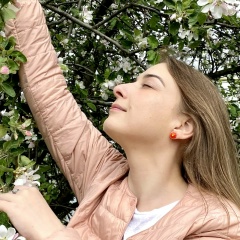Символизм страстей
Торжественный Вход Господень в Иерусалим был совершён во исполнение ветхозаветных пророчеств о том, как должен прийти Мессия. Помазание миром подготовило тело Иисуса к погребению, о чём он сам говорит в Мф. 26:12 и Мк. 14:8. Когда Иисус совершил Омовение ног ученикам, это явилось знаком смирения и кротости. Во время Тайной вечери было установлено таинство Евхаристии и ученики причастились Тела и Крови Христовых. Моление о чаше с просьбой отвратить её — одно из доказательств соединения во Христе двух природ, Божественной и человеческой:
Когда воля человеческая отказывалась принять смерть, а воля Божественная позволяла этому проявлению человечества, тогда Господь сообразно Своей человеческой природе находился в борьбе и страхе. Он молился, чтобы избежать смерти. Но так как Его Божественная воля желала чтобы Его воля человеческая приняла смерть, — страдание стало вольным и по человечеству Христову.— Иоанн Дамаскин
Облачение в багряницу, возложение тернового венца и обращение «радуйся, Царь Иудейский!» пародируют обращение к императору и являются надругательством над царским достоинством Христа («Сына Давидова» Мф. 1:1). Осуждение Иисуса на казнь именно на кресте было не менее позорным. Распятие Христово, согласно христианскому вероучению, явилось искупительной жертвой, принесённой Богом за грехи всех людей, а последующее его Воскресение стало победой над смертью:
В сей день великий Христос воззван от мертвецов, к которым приложился. В сей день отразил Он жало смерти, сокрушил мрачные затворы унылого ада, даровал свободу душам. В сей день, воспрянув из гроба, явился Он людям, для которых Он родился, умер и возбужден из мертвых.— Григорий Богослов
В гимнографии и иконографии Восточной церкви Страсти порой не имеют ярко выраженного оттенка унижения. По мнению В. Н. Лосского, для православных даже смерть на кресте и положение во гроб обретают характер торжества, в котором величие Христа просвечивает сквозь образы уничижения. Это нашло своё отражение в следующих песнопениях Триоди постной:
Совлекоша с Мене ризы Моя, и облекоша Мя в ризу червлену. Возложиша на главу Мою венец от терний, и в десную Мою руку вдаша трость, да сокрушу их яко сосуды скудельничи
(Христос, поругаемый солдатами, в конце песнопения становится уже грозным царём, готовым судить мир на Страшном суде)
Одеяйся светом яко ризою, наг на суде стояше, и в ланиту ударение прият от рук, ихже созда; беззаконнии же людие на кресте пригвоздиша Господа славы; тогда завеса церковная раздрася, солнце померче, не терпя зрети Бога досаждаема, Егоже трепещут всяческая: Тому поклонимся
(Христос предстаёт Творцом, стоящим посреди мира, охваченным ужасом от таинства его смерти)
Днешний день тайно великий Моисей прообразоваше глаголя: и благослови Бог день седмый: сия бо есть благословенная суббота, сей есть упокоения день, в оньже почи от всех дел Своих Единородный Сын Божий
(Дело искупления Христа отождествляется с делом творения мира)
Христос воскресе!
Торжественный Вход Господень в Иерусалим был совершён во исполнение ветхозаветных пророчеств о том, как должен прийти Мессия. Помазание миром подготовило тело Иисуса к погребению, о чём он сам говорит в Мф. 26:12 и Мк. 14:8. Когда Иисус совершил Омовение ног ученикам, это явилось знаком смирения и кротости. Во время Тайной вечери было установлено таинство Евхаристии и ученики причастились Тела и Крови Христовых. Моление о чаше с просьбой отвратить её — одно из доказательств соединения во Христе двух природ, Божественной и человеческой:
Когда воля человеческая отказывалась принять смерть, а воля Божественная позволяла этому проявлению человечества, тогда Господь сообразно Своей человеческой природе находился в борьбе и страхе. Он молился, чтобы избежать смерти. Но так как Его Божественная воля желала чтобы Его воля человеческая приняла смерть, — страдание стало вольным и по человечеству Христову.— Иоанн Дамаскин
Облачение в багряницу, возложение тернового венца и обращение «радуйся, Царь Иудейский!» пародируют обращение к императору и являются надругательством над царским достоинством Христа («Сына Давидова» Мф. 1:1). Осуждение Иисуса на казнь именно на кресте было не менее позорным. Распятие Христово, согласно христианскому вероучению, явилось искупительной жертвой, принесённой Богом за грехи всех людей, а последующее его Воскресение стало победой над смертью:
В сей день великий Христос воззван от мертвецов, к которым приложился. В сей день отразил Он жало смерти, сокрушил мрачные затворы унылого ада, даровал свободу душам. В сей день, воспрянув из гроба, явился Он людям, для которых Он родился, умер и возбужден из мертвых.— Григорий Богослов
В гимнографии и иконографии Восточной церкви Страсти порой не имеют ярко выраженного оттенка унижения. По мнению В. Н. Лосского, для православных даже смерть на кресте и положение во гроб обретают характер торжества, в котором величие Христа просвечивает сквозь образы уничижения. Это нашло своё отражение в следующих песнопениях Триоди постной:
Совлекоша с Мене ризы Моя, и облекоша Мя в ризу червлену. Возложиша на главу Мою венец от терний, и в десную Мою руку вдаша трость, да сокрушу их яко сосуды скудельничи
(Христос, поругаемый солдатами, в конце песнопения становится уже грозным царём, готовым судить мир на Страшном суде)
Одеяйся светом яко ризою, наг на суде стояше, и в ланиту ударение прият от рук, ихже созда; беззаконнии же людие на кресте пригвоздиша Господа славы; тогда завеса церковная раздрася, солнце померче, не терпя зрети Бога досаждаема, Егоже трепещут всяческая: Тому поклонимся
(Христос предстаёт Творцом, стоящим посреди мира, охваченным ужасом от таинства его смерти)
Днешний день тайно великий Моисей прообразоваше глаголя: и благослови Бог день седмый: сия бо есть благословенная суббота, сей есть упокоения день, в оньже почи от всех дел Своих Единородный Сын Божий
(Дело искупления Христа отождествляется с делом творения мира)
Христос воскресе!
Symbolism of passions
The solemn entry of the Lord into Jerusalem was made in fulfillment of Old Testament prophecies about how the Messiah should come. The anointing with the world prepared the body of Jesus for burial, which he himself speaks of in Matthew. 26:12 and Mk. 14: 8. When Jesus performed the washing of the feet of the disciples, this was a sign of humility and meekness. During the Last Supper, the sacrament of the Eucharist was established and the disciples partook of the Body and Blood of Christ. Praying for the cup with a request to turn it away is one of the proofs of the union in Christ of two natures, Divine and human:
When the human will refused to accept death, and the Divine will allowed this manifestation of humanity, then the Lord, in accordance with His human nature, was in struggle and fear. He prayed to avoid death. But since His Divine will desired that His human will accept death, suffering became free according to the humanity of Christ. —John Damaskin
The vestment in scarlet, the laying of the crown of thorns and the appeal “Rejoice, King of the Jews!” Parody the appeal to the emperor and are an abuse of the royal dignity of Christ (“Son of David” Matthew 1: 1). The condemnation of Jesus to execution on the cross was no less shameful. The crucifixion of Christ, according to Christian doctrine, was an atoning sacrifice made by God for the sins of all people, and his subsequent Resurrection became a victory over death:
To this day, the great Christ is called from the dead, to whom he is attached. On this day, He repelled the sting of death, crushed the gloomy locks of a despondent hell, granted freedom to souls. On this day, having risen from the grave, He appeared to the people for whom He was born, died and was excited from the dead. - Gregory the Theologian
In the hymnography and iconography of the Eastern Church, the Passion sometimes does not have a pronounced shade of humiliation. According to V. N. Lossky, even for the Orthodox, death on the cross and standing in a tomb take on the character of a triumph in which the greatness of Christ shines through images of humiliation. This is reflected in the following chants of Triodi Lenten:
Coaxing with My Robe My, and clothed Me in a robe scarlet. Laying a crown of thorns on My head, and in your gummy hand you put a cane, that I will crush them like vessels of the Skudelnitsa
(Christ, scolded by soldiers, at the end of the chant becomes a formidable king, ready to judge the world at the Last Judgment)
Dress yourself with light like a robe, standing naked in a court of law, and in lanita the emphasis is pleasant at the hands, even creating it; but lawlessness is the people on the cross who nailed the Lord of glory; then the veil of the church is torn apart, the sun is darker, not tolerating the sight of God, we are annoyed, Everybody tremble, We bow to him
(Christ appears as the Creator, standing in the middle of the world, seized by the horror of the mysteries of his death)
This day secretly the great Moses is a prototype of the verb: God bless the seventh day: this is the blessed Sabbath, this is the rest of the day, on the same bed from all His work, the Only Begotten Son of God
(The work of Christ's atonement is identified with the work of the creation of the world)
Christ is Risen!
The solemn entry of the Lord into Jerusalem was made in fulfillment of Old Testament prophecies about how the Messiah should come. The anointing with the world prepared the body of Jesus for burial, which he himself speaks of in Matthew. 26:12 and Mk. 14: 8. When Jesus performed the washing of the feet of the disciples, this was a sign of humility and meekness. During the Last Supper, the sacrament of the Eucharist was established and the disciples partook of the Body and Blood of Christ. Praying for the cup with a request to turn it away is one of the proofs of the union in Christ of two natures, Divine and human:
When the human will refused to accept death, and the Divine will allowed this manifestation of humanity, then the Lord, in accordance with His human nature, was in struggle and fear. He prayed to avoid death. But since His Divine will desired that His human will accept death, suffering became free according to the humanity of Christ. —John Damaskin
The vestment in scarlet, the laying of the crown of thorns and the appeal “Rejoice, King of the Jews!” Parody the appeal to the emperor and are an abuse of the royal dignity of Christ (“Son of David” Matthew 1: 1). The condemnation of Jesus to execution on the cross was no less shameful. The crucifixion of Christ, according to Christian doctrine, was an atoning sacrifice made by God for the sins of all people, and his subsequent Resurrection became a victory over death:
To this day, the great Christ is called from the dead, to whom he is attached. On this day, He repelled the sting of death, crushed the gloomy locks of a despondent hell, granted freedom to souls. On this day, having risen from the grave, He appeared to the people for whom He was born, died and was excited from the dead. - Gregory the Theologian
In the hymnography and iconography of the Eastern Church, the Passion sometimes does not have a pronounced shade of humiliation. According to V. N. Lossky, even for the Orthodox, death on the cross and standing in a tomb take on the character of a triumph in which the greatness of Christ shines through images of humiliation. This is reflected in the following chants of Triodi Lenten:
Coaxing with My Robe My, and clothed Me in a robe scarlet. Laying a crown of thorns on My head, and in your gummy hand you put a cane, that I will crush them like vessels of the Skudelnitsa
(Christ, scolded by soldiers, at the end of the chant becomes a formidable king, ready to judge the world at the Last Judgment)
Dress yourself with light like a robe, standing naked in a court of law, and in lanita the emphasis is pleasant at the hands, even creating it; but lawlessness is the people on the cross who nailed the Lord of glory; then the veil of the church is torn apart, the sun is darker, not tolerating the sight of God, we are annoyed, Everybody tremble, We bow to him
(Christ appears as the Creator, standing in the middle of the world, seized by the horror of the mysteries of his death)
This day secretly the great Moses is a prototype of the verb: God bless the seventh day: this is the blessed Sabbath, this is the rest of the day, on the same bed from all His work, the Only Begotten Son of God
(The work of Christ's atonement is identified with the work of the creation of the world)
Christ is Risen!

У записи 5 лайков,
1 репостов.
1 репостов.
Эту запись оставил(а) на своей стене Вероника Вовденко


























